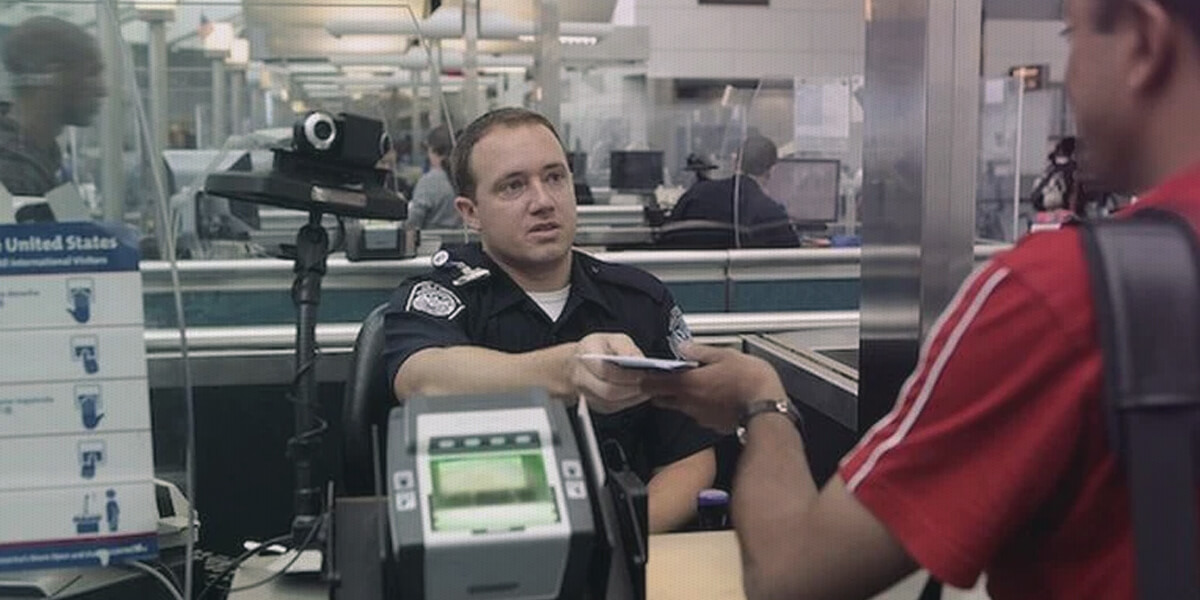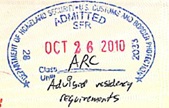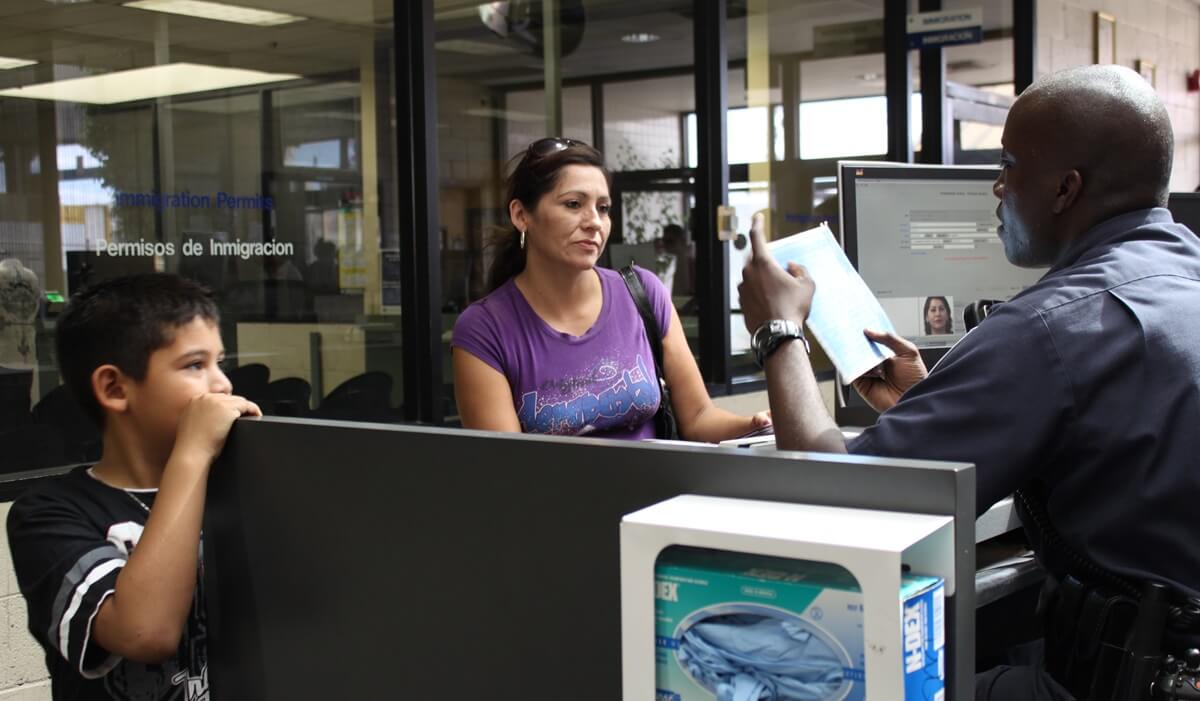
Lawful permanent residents can lose their status through unintentional green card abandonment, often caused by extended absences from the United States. While temporary travel for vacation, family visits, or business is allowed, staying abroad too long or without clear intent to return can jeopardize permanent residency. Each year, many green card holders face scrutiny upon returning to the U.S. if their trips are deemed not temporary. Understanding when an absence becomes abandonment is crucial for maintaining your status.
Understanding Green Card Abandonment at the U.S. Border
Reentry Permit is One Strategy for Long Absences
Maintaining Ties to the U.S. to Preserve Residency
Unplanned Absence of More Than One Year
Guidelines to Avoid Abandonment of Permanent Residence
Naturalizing is an Effective Strategy for Heavy Travelers
How CitizenPath Helps
Understanding Green Card Abandonment at the U.S. Border
When returning to the United States after time abroad, lawful permanent residents (LPRs) may face scrutiny regarding their residency. Below are key issues to understand about green card abandonment and how to protect your status.
No Fixed Timeline for Abandonment
First, it's important to understand that there is no definitive time limit that guarantees you’ll retain your status. Permanent residents may use a green card to reenter the U.S. after travel abroad of less than one year. However, under INA § 101(a)(13)(C)(ii), an LPR absent from the U.S. for over 180 days is treated as seeking re-admission and subject to grounds of inadmissibility. While questions of abandonment typically arise after absences longer than one year, shorter trips can still lead to complications depending on their nature and purpose.
Questioning at the U.S. Port of Entry
The problem often begins when a Customs and Border Protection (CBP) officer questions a green card holder at a U.S. port of entry. For trips lasting one year or more, the green card is automatically invalid for reentry without prior arrangements, such as obtaining a reentry permit. However, even trips of 180 days or more can trigger additional questioning. Common questions include:
- Where have you been outside the U.S.?
- How long were you there?
- What was the purpose of your trip?
- Why are you returning to the U.S. now?
- What ties to the U.S. did you maintain while abroad?
CBP officers use these questions to assess whether your trip was temporary or whether you abandoned the United States as your primary residence.
Risk of Signing Form I-407
If the officer suspects that you abandoned your lawful permanent resident status, they may ask you to sign Form I-407, Record of Abandonment of Lawful Permanent Resident Status. Signing this form voluntarily relinquishes your green card. If you believe your trip was temporary, refuse to sign the form and immediately consult an immigration attorney. Without your consent, the officer cannot strip you of your status but may refer your case to Immigration Court for a judge to decide.
By understanding these risks and proactively planning your travel, you can avoid unintentional green card abandonment and maintain your lawful permanent resident status.
Reentry Permit is One Strategy for Long Absences
One way to proactively avoid issues with green card abandonment is to apply for and obtain a reentry permit. Unlike a green card, which is valid for return after an absence of up to one year, the reentry permit is valid for up to two years. Obtaining a reentry permit removes the length of the absence as a factor as to whether residency was abandoned and can help demonstrate your intent to return to the United States.
3 Ways a Reentry Permit Reduces Risk of Abandonment
A reentry permit can help you prevent green card abandonment in these three scenarios:
You expect to be absent from the U.S. for over one year but less than two years.
As previously mentioned, your green card is not valid for reentry after one year. A lawful permanent resident may use a reentry permit to reenter the U.S. after trips up to two years in length.
You expect to be absent from the U.S. for at least 180 days (continuously) over a period of two straight years.
When you spend more time outside the United States than inside it, you increase the suspicion of green card abandonment. The reentry permit provides a method of proactively explaining the reason for your anticipated and temporary absence.
CBP officer has warned you that you are at risk of green card abandonment.
On previous entries to the U.S. a CBP officer may have given you a verbal warning or notation near your passport stamp. For example, on the passport stamp to the right, the handwritten notation says, “Advised residency requirements.”

How to Apply for a Reentry Permit
To apply for a reentry permit, you must file Form I-131, Application for Travel Documents, Parole Documents, and Arrival/Departure Records. You’ll need to be in the U.S. to file the application and attend a biometric appointment a few weeks later. However, you may request that USCIS deliver your travel document to a U.S. embassy or other U.S. government facility abroad. The entire process make take approximately 5 to 8 months – so plan early.
Using CitizenPath's Travel Document Package simplifies the reentry permit application process, provides step-by-step guidance, and gives you built-in error checks and a supporting document checklist. The service helps you avoid costly delays and ensures your application is complete and accurate.
Reentry Permit is Not a Cure All
However, a reentry permit is not a “cure all.” It’s not a guarantee that you will be able to reenter the United States. It’s still necessary for you to prove to the CBP officer that you haven’t abandoned your green card. If your trip abroad was for the same temporary purpose described in your reentry permit application, then it’s likely the officer will conclude your absence was temporary and will readmit you. On the other hand, you could be at risk of abandoning your permanent residence if the officer determines that you have not maintained sufficiently strong ties with the United States.
Maintaining Ties to the U.S. to Preserve Residency
The duration of your absence is just one factor that immigration officials use when determining if a trip was temporary. In addition to the duration of your trip, they will look at other aspects of your visit abroad that suggest your intentions.
Activities That Demonstrate Severed Ties
According to U.S. Citizenship and Immigration Services (USCIS), some of the factors that can indicate that an absence was not temporary (regardless of duration of absence) include: frequent absences from the United States; disposing of property or terminating a job in the United States before leaving; intending to live in another country permanently; voting in a foreign election; running for political office in a foreign country; and failure to file a U.S. income tax return. Declaring oneself a "nonresident alien” on your U.S. tax return, would be a serious admission of green card abandonment.
Questioning at the U.S. Port of Entry
The CBP officer will consider the strength of your ties in the U.S. compared to your ties abroad. Examples of questions the officer may ask include:
- Do you own or rent a home in the United States?
- If you own or rent property in the U.S., do you have access to it and are your belongings in it, or have you rented it out to somebody else?
- Do you own or rent a home in a foreign country?
- Where do you work or go to school?
- Where do your close relatives live?
- Do you file an income tax return each year in the U.S.?
- Where do you keep your key assets (e.g., bank accounts, credit card accounts, cars, insurance)?
- Do you have a valid U.S. driver’s license?
Evidence of Ties to the United States
Your answers to an immigration officer’s questions are important, but evidence is even more compelling for proving your continuous, uninterrupted intent to return to the United States.
Upon your return, be prepared to clearly explain the reason for your temporary trip. If the absence extended beyond 180 days due to unforeseen circumstances, it may continue to be a temporary trip so long as the intent was to always return to the United States. In fact, it must be your intent to return to your home in the U.S. throughout the entire trip. But an immigration officer doesn’t know what you’re thinking. So evidence that you’ve maintained strong ties to the United States carries more weight.
Some examples of evidence that may be used to help corroborate your continuous, uninterrupted intent to return to the U.S. include (but are not limited to):
- Property deed or rent agreement for your home;
- U.S. bank and credit card accounts;
- Current driver’s license for your state of residence;
- Evidence that a salary was paid by a U.S. employer within a reasonable period of time;
- Evidence of children’s enrollment in a U.S. school;
- U.S. income tax return(s) for the past three year(s); and
- Membership and active participation in a U.S. professional or social organization.
Unplanned Absence of More Than One Year
As previously mentioned, a green card is not valid for reentry to the United States if your absence has been one year or longer. Sometimes, unforeseen circumstances such as a medical emergency or employment extension, can cause an LPR to stay abroad beyond one year. So if you did not obtain a reentry permit, what can be done to avoid green card abandonment?
Qualifying for a Returning Resident Visa (SB-1)
Certain individuals may qualify for a returning resident (SB-1) visa. This visa is available to permanent residents who can prove their commitment to maintaining U.S. residency despite unforeseen circumstances. You must be able to demonstrate that the reason for your extended stay was beyond your control and that your intent was always to return to the United States.
Preparing a Strong SB-1 Application
A successful SB-1 visa application includes the following key components:
- Properly prepared Form DS-117 (returning resident visa application)
- Copy of your permanent resident card (green card)
- Copy of your re-entry permit (if applicable)
- Evidence that the reason for staying abroad is beyond your control
- Information on the dates of your travel outside the U.S.
- Evidence of your intent to return to the U.S.
- Evidence of ties to the U.S.
Submit your application at the U.S. embassy or consular office closest to you. If the consular officer determines that your departure was with the intent to return to your unrelinquished U.S. residence and your extended stay was unavoidable, they will generally grant the SB-1 visa. Consider consulting an experienced immigration attorney to improve your chances of success.
Guidelines to Avoid Abandonment of Permanent Residence
If possible, travel conservatively. Keep trips abroad less than 180 days, spend the majority of your time inside the United States, and maintain strong ties to your U.S. home.
If your circumstances force you to be outside the United States for extended periods of time – especially if you have been warned by a CBP officer – seek advice from an immigration lawyer that can analyze your specific situation and recommend how to improve your ties to the United States.
Naturalizing is an Effective Strategy for Heavy Travelers
U.S. citizens are not restricted by the same requirements as lawful permanent residents. As a result, citizens can enjoy longer periods of travel outside the United States without any scrutiny from immigration officials. Thus, naturalizing as a U.S. citizen is a common strategy to avoid green card abandonment.
When evaluating your application against the naturalization requirements, USCIS will analyze your continuous residence and absences over the previous five years. There will be a presumption that you’ve broken your continuous residence requirement for any absence from the U.S. of six months or more during the five years prior to filing Form N-400, Application for Naturalization. Absences of one year or more will always disrupt the continuous residence requirement. Unfortunately, a reentry permit does not protect your continuous residence requirement for the purposes of naturalization. If a permanent resident is absent from the United States for one year or more, they will disrupt the continuous residence requirement for naturalization even if they traveled with a valid reentry permit.
How CitizenPath Helps and Your Family
CitizenPath provides simple, affordable, step-by-step guidance through USCIS immigration applications. Individuals, attorneys and non-profits use the service on desktop or mobile device to prepare immigration forms accurately, avoiding costly delays. CitizenPath allows users to try the service for free and provides a 100% money-back guarantee that USCIS will approve the application or petition. We provide support for the Travel Document Package (Form I-131), Naturalization Package (Form N-400), and several other USCIS forms.
CitizenPath simplifies the immigration process with easy-to-follow, attorney-reviewed tools that help families. Stay informed with our free newsletter, offering expert tips, updates, and resources to navigate every step of the journey successfully.
Want more immigration tips and how-to information for your family?
Sign up for CitizenPath’s FREE immigration newsletter and
SAVE 10%
on our immigration services








